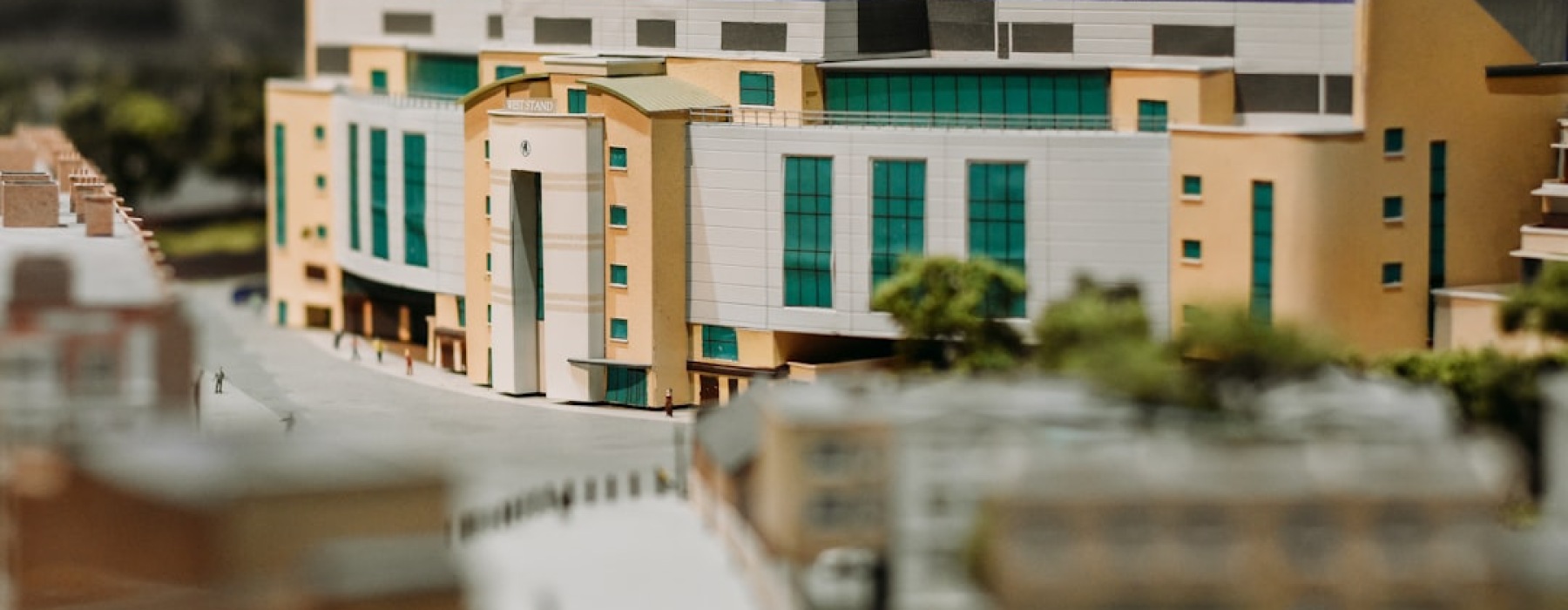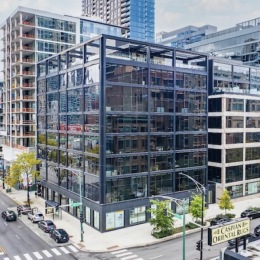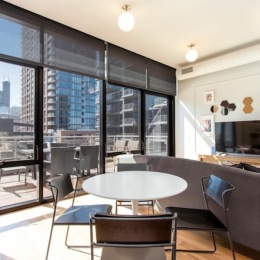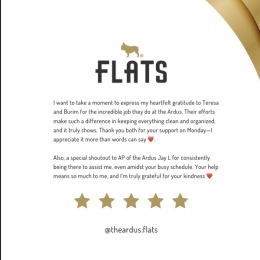Why Apartment 3D Models Are Changing How We Experience Spaces
An apartment 3d model is a digital three-dimensional representation of a living space that allows you to explore, visualize, and interact with rooms before they're built or before you visit them in person.
Key Types of Apartment 3D Models:
- Interior Models - Complete room layouts with furniture and decor
- Exterior Models - Building facades, balconies, and architectural details
- Floor Plan Models - Top-down 3D views showing spatial relationships
- Individual Asset Models - Specific furniture pieces, appliances, or fixtures
- Full Building Models - Entire apartment complexes or condominiums
The apartment search experience is undergoing what many call a revolution. As one virtual platform puts it: "From Science Fiction to Reality" - these digital models now enable remote renting and real-time exploration of properties from anywhere in the world.
Whether you're an architect visualizing a new development, a designer planning room layouts, or someone searching for the perfect home, 3D models have transformed how we understand and experience living spaces. With over 1,145 free apartment 3D models available on platforms like CGTrader, and comprehensive kits containing up to 74 PBR materials for realistic rendering, the technology has become both accessible and sophisticated.
These digital representations serve multiple purposes: they help architects present unbuilt projects, enable interior designers to experiment with layouts, and allow prospective renters to take immersive virtual tours without leaving their current home.
Understanding the Building Blocks: Types of Apartment 3D Models
Picture this: you're exploring a potential new home, but instead of rushing through a quick walkthrough, you can examine every corner, test different furniture arrangements, and even see how the morning light hits your coffee cup. That's the magic of understanding the different types of apartment 3d model options available today.
Just like a toolbox has different tools for different jobs, 3D modeling offers various types of digital representations, each designed to solve specific challenges in how we experience and understand living spaces.
Interior Models
Interior models are where the real magic happens for most apartment hunters and designers. These detailed digital spaces capture everything inside your potential new home – from the flow between the kitchen and living room to how that cozy reading nook might look with your favorite armchair.
What makes interior models special is their attention to the details that matter most in daily living. They show room layouts with precision, demonstrate furniture placement possibilities, and even include decor elements that help you envision your life in the space. Take our A10 Floor Plan – when rendered as a 3D interior model, you can virtually walk through and see exactly how the open-concept design creates that perfect entertaining space.
Exterior Models
While interior models show you where you'll live, exterior models reveal how your building presents itself to the world. These models focus on building facades, showcasing architectural details like the way balconies catch afternoon light or how windows frame city views.
For a place like The Ardus, with its unique warehouse-to-apartment change, exterior models help you appreciate the blend of industrial heritage and modern design that makes the building special.
Full Building Models
Sometimes you need to see the bigger picture. Full building models capture entire structures, perfect for understanding multifamily housing developments or condominiums in their complete context. These comprehensive models show not just individual units, but common areas, rooftop spaces, and how the building fits into the neighborhood.
You might explore something like an Apartment Building in Chicago, IL, USA to understand the full scope of urban apartment living.
Individual Asset Models
Think of these as the building blocks within the building blocks. Individual asset models represent specific items – that perfect sofa for your living room, essential appliances for your kitchen, stylish light fixtures, or even the plants that'll bring life to your space.
These models are incredibly useful for virtual staging, allowing designers and residents to experiment with different pieces until they find the perfect combination that makes a house feel like home.
3D Floor Plans
Traditional floor plans can feel flat and confusing, but 3D floor plans bring layouts to life with a dynamic top-down perspective. They clearly illustrate spatial flow between rooms and provide accurate room dimensions in a way that's easy to understand.
Our Floor Plans become much more meaningful when viewed in three dimensions – suddenly, you can see how the kitchen island creates a natural gathering spot or how the bedroom layout maximizes both privacy and natural light.
Each type of model serves its own purpose, but together they create a complete picture of what it means to call a place home. Whether you're an architect planning the next great residential development or someone searching for the perfect apartment, understanding these different types helps you make the most of 3D technology in your journey.
The "Why": Key Applications and Benefits of Using an apartment 3d model
Picture this: you're sitting in your current living room, scrolling through apartment listings, and suddenly you can walk through a potential new home without leaving your couch. That's the magic of apartment 3d model technology, and it's changing everything from how architects design spaces to how we find our next home.
Architectural Visualization (Archviz)
Before construction crews break ground, architects are already walking clients through finished buildings using detailed 3D models. This process, known as architectural visualization or Archviz, lets everyone see exactly what a project will look like when it's complete.
Think of it as a crystal ball for construction. Architects can present unbuilt projects with stunning clarity, validate their designs by spotting potential issues early, and ensure everyone – from investors to city planners – shares the same vision. It's much easier (and cheaper!) to move a wall in a digital model than after the concrete has been poured.
Interior Design
For interior designers, apartment 3d models have become as essential as measuring tapes once were. These digital tools enable virtual staging, where an empty space transforms into a fully furnished, decorated home with just a few clicks.
Designers can experiment endlessly with different furniture arrangements, test various material selections like hardwood versus tile flooring, and even see how natural light will play across different paint colors throughout the day. The E2 Floor Plan becomes a playground for creativity, where multiple design schemes can be explored without moving a single piece of furniture.
Real Estate Marketing
In today's competitive housing market, static photos just don't cut it anymore. Apartment 3d models create immersive property showcases that grab attention and keep potential residents engaged. These digital experiences reach far beyond traditional geographic boundaries – someone in California can thoroughly explore a Chicago apartment as if they were standing in the living room.
This level of visual storytelling helps properties stand out in crowded listings and gives prospective residents confidence in their choices before they schedule an in-person visit.
Revolutionizing the Apartment Search
Here's where 3D technology really shines for apartment hunters. The days of relying on a few photos and hoping for the best are fading fast. Remote renting has become a reality, allowing people to explore spaces from anywhere in the world and make informed decisions about their future homes.
This technology leads to dramatically improved decision-making. Instead of wondering whether that couch will fit or if the kitchen has enough counter space, you can virtually place furniture and get a true sense of the flow and functionality. Our Virtual Tours exemplify this shift, offering an unparalleled way to experience living spaces before you visit.
The ability to explore a space from anywhere has proven especially valuable for people relocating for work, students heading to new cities, or anyone who wants to thoroughly understand a property's potential without the time and expense of multiple site visits.
Gaming and Animation
Beyond real estate, apartment 3d models serve as the foundation for creating realistic environments in video games and animated films. These digital assets become the backdrop for virtual trips and storytelling, whether it's a cozy studio apartment in an indie game or a luxury penthouse in a Hollywood production.
Game developers and animators rely on these detailed models to build believable worlds that draw audiences into their stories, proving that the applications for 3D apartment modeling extend far beyond helping people find their next home.
The Technical Toolkit: Formats, Features, and Finding Models
Working with an apartment 3d model is like learning a new language – once you understand the basics, everything becomes much clearer. Think of this as your friendly guide to the technical side, without all the confusing jargon.
Common File Formats Explained
Just like photos can be JPEGs or PNGs, 3D models come in different file formats. Why does this matter? Because different software programs need different formats to work properly – it's like making sure you have the right key for the right door.
The most versatile formats work across many different programs. FBX files are like the Swiss Army knife of 3D formats – they can store everything from the basic shape to textures, animations, and lighting information. OBJ files are simpler but incredibly reliable, perfect when you just need a clean, basic model that works everywhere.
Then there are software-specific formats that work best with particular programs. If you're using 3ds Max, you'll see .MAX files. Blender users work with .BLEND files. SketchUp creates .SKP files, while architects often use AutoCAD's .DWG format for precise technical drawings.
As more people experience apartments through virtual tours online, web-optimized formats like GLB and GLTF are becoming increasingly important. These formats load quickly in web browsers, making those smooth virtual apartment tours possible.
Key Technical Features of an apartment 3d model
Every apartment 3d model has certain technical characteristics that affect how it looks and performs. Poly count is probably the most important one to understand – it's simply how many tiny triangular surfaces make up the model.
Low-poly models use fewer triangles, making them faster to load and perfect for virtual tours that need to run smoothly on any device. High-poly models use many more triangles, creating incredibly detailed surfaces that look stunning in professional renderings, though they need more powerful computers to handle.
PBR Materials (Physically Based Rendering) make models look incredibly realistic by simulating how light bounces off different surfaces in the real world. Some comprehensive model kits include up to 74 PBR materials, giving you everything from polished marble countertops to soft fabric textures.
Your computer's system requirements matter when working with these models. A good CPU acts as the brain, while a powerful GPU with plenty of VRAM handles the visual processing. Having enough RAM keeps everything running smoothly, and you'll need sufficient disk space since detailed model kits can require up to 15GB of storage. You can learn more about technical requirements from the professionals who create these models.
Where to Find Apartment 3D Models
The internet is full of places to find apartment 3d models, whether you're looking for something free to experiment with or a professional-grade asset for a serious project.
Marketplaces like CGTrader offer an enormous selection, including over 1,145 free apartment models – perfect for getting started or finding basic pieces. The SketchUp 3D Warehouse provides a vast library of free models that work seamlessly with SketchUp's user-friendly interface.
For something truly unique, custom modeling services can create exactly what you need. Whether you want a precise replica of a specific space or a completely original design, professional 3D artists can bring your vision to life. You can even get a quote for custom models from specialized services.
The beauty of today's 3D technology is that it's become accessible to everyone, from professional architects to curious apartment hunters who want to better understand a space before visiting.
Assembling Your Scene: What's Inside a 3D Model Kit?
Picture opening a treasure chest filled with everything you need to build your dream apartment – but in the digital world. That's exactly what an apartment 3d model kit offers! These comprehensive collections are like getting a complete furniture store, construction site, and interior design studio all rolled into one neat package.
The magic happens through something called kitbashing – a concept borrowed from model making where you combine different components to create something entirely new and unique. Instead of starting from scratch every time, these kits give you professionally crafted pieces that work together seamlessly, letting your creativity flow without getting bogged down in technical details.
Structural Components
Every great apartment starts with solid bones, and that's where structural components come in. Think of these as the foundation and framework that define your space. Large structures might include entire building facades or multi-story sections that establish the overall character of your scene. These are the showstoppers – the elements that make people stop and say "wow" when they first see your model.
Medium structures bring things down to a more intimate scale. We're talking about individual rooms, cozy hallways, or distinctive sections that give each area its own personality. These pieces help you create that perfect flow between spaces that makes an apartment feel like home.
The real flexibility comes with small structures – think of them as your building blocks. Windows that let in just the right amount of light, doors that welcome you in, charming balconies perfect for morning coffee, and modular wall and floor pieces that you can mix and match. These components snap together like digital LEGO blocks, letting you build custom layouts that match your vision perfectly.
Props and Decor
Here's where the magic really happens – turning empty rooms into spaces that feel lived-in and loved. The props and decor in an apartment 3d model kit are what transform a sterile architectural shell into a warm, inviting home.
Furniture forms the heart of any living space. You'll find everything from plush sofas perfect for movie nights to neat dining tables where friends gather. Beds that look so comfortable you wish you could climb right in, and storage solutions that are both beautiful and practical.
Appliances bring modern convenience to life. Sleek refrigerators, professional-grade ovens, and all those essential gadgets that make daily life smooth and enjoyable. Cabinetry provides both function and style, with kitchen storage that dreams are made of and bathroom vanities that add that spa-like touch.
The finishing touches come through wall art and home electronics – those paintings that spark conversation, mirrors that open up space, and entertainment systems that bring families together. These details are what make each apartment unique and personal.
Materials and Textures
What makes an apartment 3d model truly come alive? The materials and textures that make everything look and feel real. Modern kits often include 74 PBR materials – that's Physically Based Rendering materials that react to light just like their real-world counterparts.
Wood textures capture every grain and finish, from rich mahogany flooring to rustic reclaimed barn wood accents. Metal surfaces range from brushed steel appliances to polished brass fixtures that catch the light beautifully. Fabric materials bring softness and comfort, with realistic weaves for upholstery and flowing curtains. Glass elements add transparency and reflection, creating those bright, airy spaces that feel so welcoming.
These materials don't just look good – they behave realistically when light hits them, creating shadows, reflections, and that subtle interplay of textures that makes a space feel authentic.
Typical Kit Contents
A well-designed kit is incredibly generous with what it offers. You might find 10 large structures for establishing your overall design, along with 50-100 props and components that let you furnish every corner with personality. The 30-60 materials included give you endless possibilities for customization.
Whether you're creating the airy elegance of a modern penthouse or the cozy charm of a studio apartment, these comprehensive collections provide everything you need. You can read more about what comes with a Kit to find the full scope of possibilities waiting for you.
Frequently Asked Questions about Apartment 3D Models
We know that exploring apartment 3d models can spark quite a few questions. Whether you're curious about the technology or thinking about creating your own virtual space, let's dive into the most common questions that come up.
What software is best for working with an apartment 3d model?
Choosing the right software for your apartment 3d model project is a bit like picking the perfect tool for a home improvement job – it all depends on what you're trying to accomplish!
Architects and designers who focus on precise planning and drafting often gravitate toward AutoCAD or SketchUp. These programs excel at creating accurate floor plans and clean 3D layouts. SketchUp has earned a reputation for being particularly welcoming to newcomers, making it easier to jump in and start creating without feeling overwhelmed.
If you're aiming for stunning visual presentations, programs like 3ds Max, Blender, or Cinema 4D are your best friends. These powerhouse applications can create those jaw-dropping, photorealistic images and smooth animations that make you do a double-take. Here's something exciting: Blender is completely free and open-source, yet it offers professional-grade tools that rival expensive software suites.
For creating interactive virtual tours that feel like walking through a video game, game engines such as Unreal Engine or Unity take center stage. These platforms allow for real-time rendering and true interactivity, changing your apartment 3d model into an immersive experience where visitors can actually explore and interact with the space.
The beautiful thing about modern 3D workflows is file format compatibility. Most professional software can easily import and export common formats like .FBX and .OBJ, giving you the flexibility to start a project in one program and finish it in another.
How are 3D models different from a 360-degree photo tour?
This question comes up all the time, and for good reason! Both technologies offer virtual experiences, but they work in completely different ways.
Think of a 360-degree photo tour like standing in the center of a room and spinning around with a special camera. You capture everything around you in one panoramic shot. When someone views this tour, they can look up, down, left, and right from that exact spot, getting a great sense of the immediate surroundings. It's like peering through a very wide digital window – you can see a lot, but you're still looking at essentially a flat image from a fixed position.
An apartment 3d model creates something entirely different: a complete digital environment built from the ground up. Instead of being stuck in one spot, you can move freely through the entire space. Want to walk from the living room to the kitchen? No problem. Curious about the view from the balcony? Just stroll right over there. You can examine details up close, get a bird's-eye view of the entire floor plan, or even peek around corners.
The difference becomes really clear when you think about interaction. With a 360-degree photo, you're essentially looking at a very immersive picture. With a 3D model, you're exploring an actual digital space where advanced versions might let you open doors, switch out furniture, or even change the paint colors on the walls.
Can I create a 3D model of my own apartment?
Absolutely! Creating an apartment 3d model of your own space has become surprisingly accessible, and you have several paths to choose from depending on your technical comfort level and desired results.
Your smartphone might already have everything you need to get started. Several mobile apps use a technique called photogrammetry, which sounds fancy but is actually quite simple. You walk around your apartment taking lots of overlapping photos from different angles and heights. The app then analyzes these images and stitches them together into a basic 3D model. While these smartphone-generated models might not be perfectly precise, they can give you a solid starting point for planning renovations or just having fun with a digital version of your space.
For more detailed and accurate results, dedicated 3D modeling software opens up a whole new world of possibilities. Blender stands out as an incredible option because it's completely free yet incredibly powerful. Yes, there's a learning curve, but the online community has created thousands of tutorials to help you master everything from basic room modeling to advanced lighting techniques. You'd typically start by measuring your apartment carefully, then use the software to "build" your space digitally, adding walls, floors, and furniture piece by piece.
SketchUp offers another excellent pathway, especially if you're more interested in architectural layouts than complex animations. Many people find it more intuitive than other 3D programs, making it a great choice for your first apartment 3d model project.
The process can be incredibly rewarding. Not only do you end up with a cool digital twin of your living space, but you also gain a powerful tool for visualizing potential changes before you commit to them in real life. Whether you're planning a furniture rearrangement or dreaming about a full renovation, having your own 3D model makes the planning process both more accurate and more fun.
Conclusion
We've taken quite a journey together exploring the fascinating world of apartment 3d models, haven't we? What started as a simple digital representation has evolved into something that's genuinely changing how we experience living spaces. These versatile digital assets are doing much more than creating pretty pictures – they're revolutionizing the entire process of designing, marketing, and finding our future homes.
Think about it: architects can now walk clients through buildings that exist only in their imagination, interior designers can test dozens of furniture arrangements without moving a single couch, and you can explore your next apartment from your current living room. That's pretty amazing when you step back and look at the big picture.
The future is even more exciting. Virtual reality integration is making it possible to literally step inside a digital apartment and feel like you're actually there. Augmented reality applications are letting us hold up our phones and see how a 3D model would look right in our real space. As these technologies continue to evolve, online property platforms are becoming more sophisticated and engaging every day.
Here at The Ardus Apartments, we're embracing this technological revolution while honoring our unique character. Our modern living spaces in River North showcase how a former warehouse can be transformed into stylish apartments that blend historical charm with contemporary features. From our rooftop lounge to our on-site coffee shop, we're always looking for ways to improve your living experience.
We'd love for you to see how 3D technology brings spaces to life. Take a look at our immersive showcases in our Gallery to get a feel for what makes our community special. Even better, dive into our virtual tours and experience how an apartment 3d model can help you envision your next perfect home.
The world of apartment hunting has changed, and we think it's changed for the better. Why not see for yourself?









